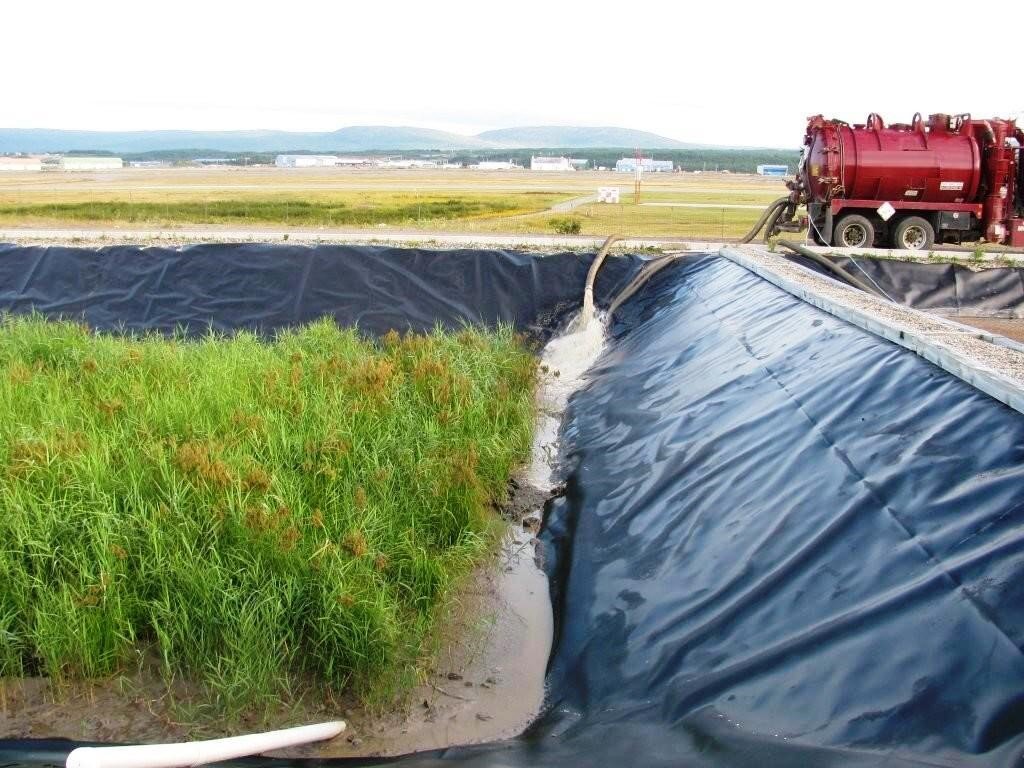Engineered wetlands provide economical low maintenance wastewater treatment capable of operating year-round in Canada. Through employing microbial organisms in the wetland growing medium, along with the natural aeration capabilities of wetland plants the system is capable of high treatment results.
Process
Engineered wetlands work through the development of microbial communities within the wetland growth medium that biologically and chemically break down contaminants. Oxygen is transferred to the growth medium through the roots of the wetland plants. This provides enough oxygen to ensure that the system operated under aerobic conditions providing minimal odour.
Wastewater flows into the system and is directed subsurface. As the water flows through the system the microbial activity oxidizes and breaks down contaminates and removes it from the waste stream. Through this process the system is able to provide consistent effluent well within regulatory requirements.
In addition to provided oxygen, the plants also provide a insulation layer above the surface. This ensures that the system maintains subsurface temperatures capable of treatment throughout the cold winters in Canada. Through this process the systems are able to provide treatment year-round to high effluent standards. Depending on the wastewater composition and flow rates Abydoz will develop the optimal layout with regards to wetland type.
Advantages
Low Energy Consumption
There are no large blowers, pumps, or motors associated with the wetlands. The only requirement for electricity is the chosen primary treatment, and a pump into the front of the wetlands if required. Therefore minimal energy is required to run the system, especially in comparison to mechanical systems.
Low Maintenance
Different from many mechanical systems, the system is self-regulating and adapts very well to significant variations in loadings and flows with out the need for an operator. This ensures there is no need for mechanical pumps, large aerators and blowers, or complex control components. This greatly reduces ongoing maintenance costs associated with repair and replacement of moving parts and control systems.
Modular and Expandable
Should the wastewater generation grow more rapidly than expected or if future development is needed, the wetland system can be expanded by adding a bed or beds to accommodate the added flows. Additional beds can easily be added to the system as they are needed providing low initial investment and long-term flexibility.
No Chemicals
No chemical addition is needed for the wetland system so there is no risk of a hazardous spill or leakage into the local watershed. This also greatly reduces operating costs and eliminates the need for buildings electricity, storage issues, and hazards.
Long System Life
The life of this system is estimated to be a minimum of 40 years. Currently the oldest Kickuth systems are between 36 and 44 years of age and show no signs of reduced performance. Once in operation the system is an appreciating asset and performance actually improves as the system ages.
Aesthetically pleasing
The wetland system is a very natural, aesthetically pleasing system. Viewing areas, educational display boards, and walking trails can easily be incorporated into the design of the system. We encourage school trips and provide an engineer to give tours for schools in communities that install systems.











